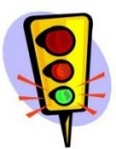
Worksheets and No Prep Teaching Resources
Reading Comprehension Worksheets
Transportation

Transportation
 Worksheets and No Prep Teaching Resources Reading Comprehension Worksheets Transportation |
 Transportation |
| edHelper's suggested reading level: | grades 5 to 7 | |
| Flesch-Kincaid grade level: | 11.08 |
|
Jet Reaction, Part 1
By Trista L. Pollard |

|
 1 Sir Isaac Newton, a seventeenth century English mathematician and physicist, developed one of the most important laws of motion: for every reaction, there is an equal and opposite reaction. Newton's Third Law of Motion is the basis for reaction engines. Reaction engines are engines that produce power as a reaction to the momentum from the gases that are ejected from them. The birth of the reaction engine is the reason we are able to send airplanes worldwide and rockets into space.
1 Sir Isaac Newton, a seventeenth century English mathematician and physicist, developed one of the most important laws of motion: for every reaction, there is an equal and opposite reaction. Newton's Third Law of Motion is the basis for reaction engines. Reaction engines are engines that produce power as a reaction to the momentum from the gases that are ejected from them. The birth of the reaction engine is the reason we are able to send airplanes worldwide and rockets into space. |
Create Weekly Reading Books
Prepare for an entire week at once! |
| Leave your feedback on Jet Reaction, Part 1 (use this link if you found an error in the story) |
 |
Transportation
|